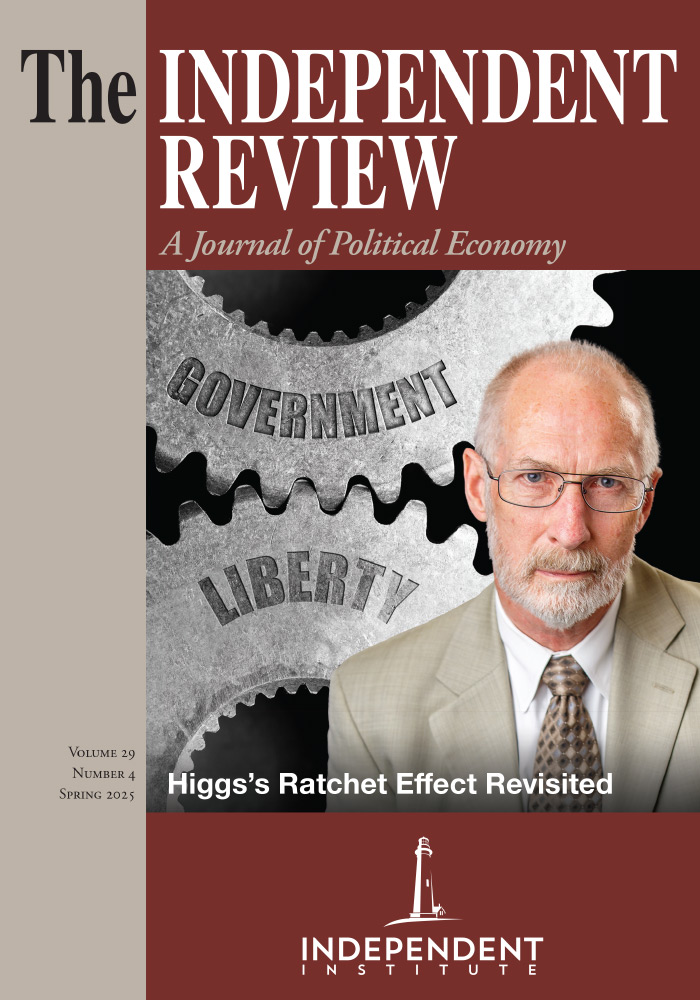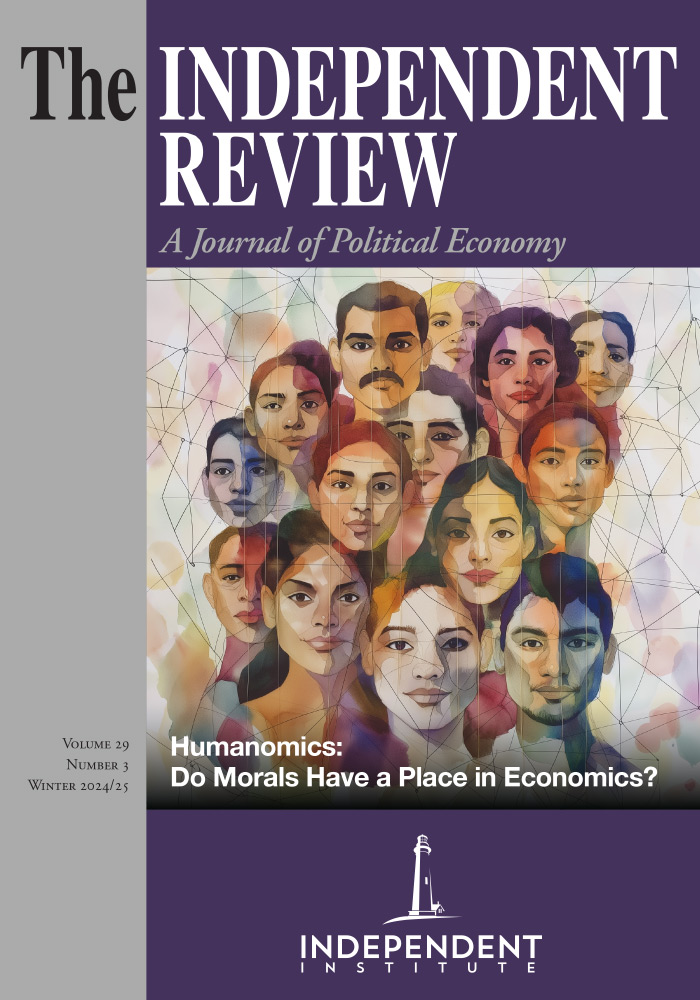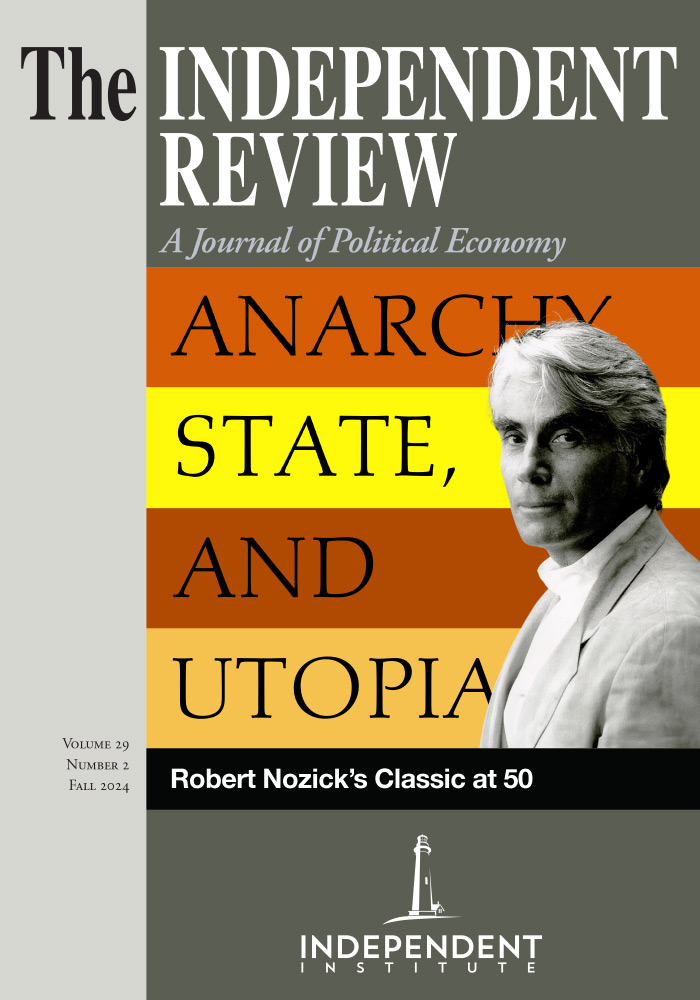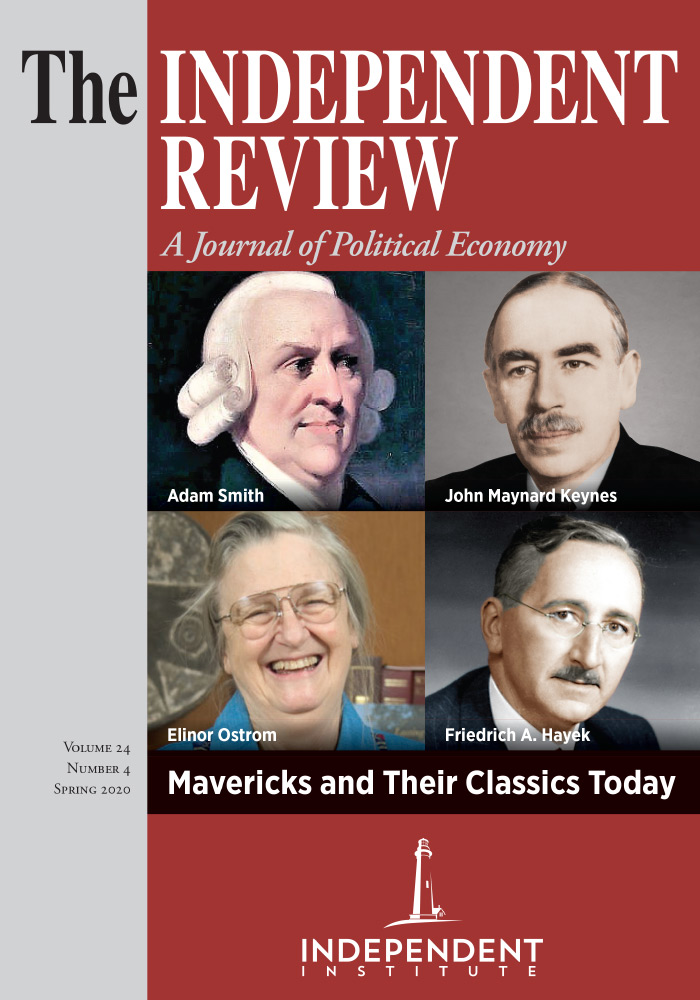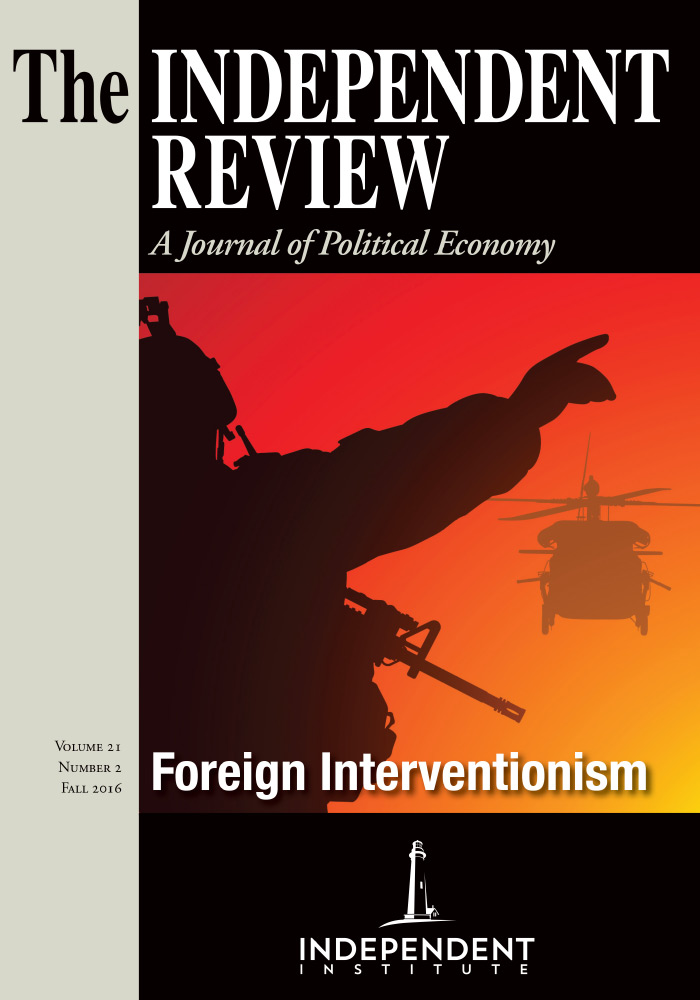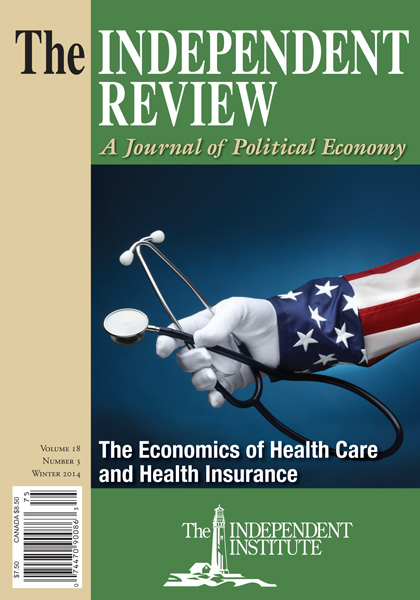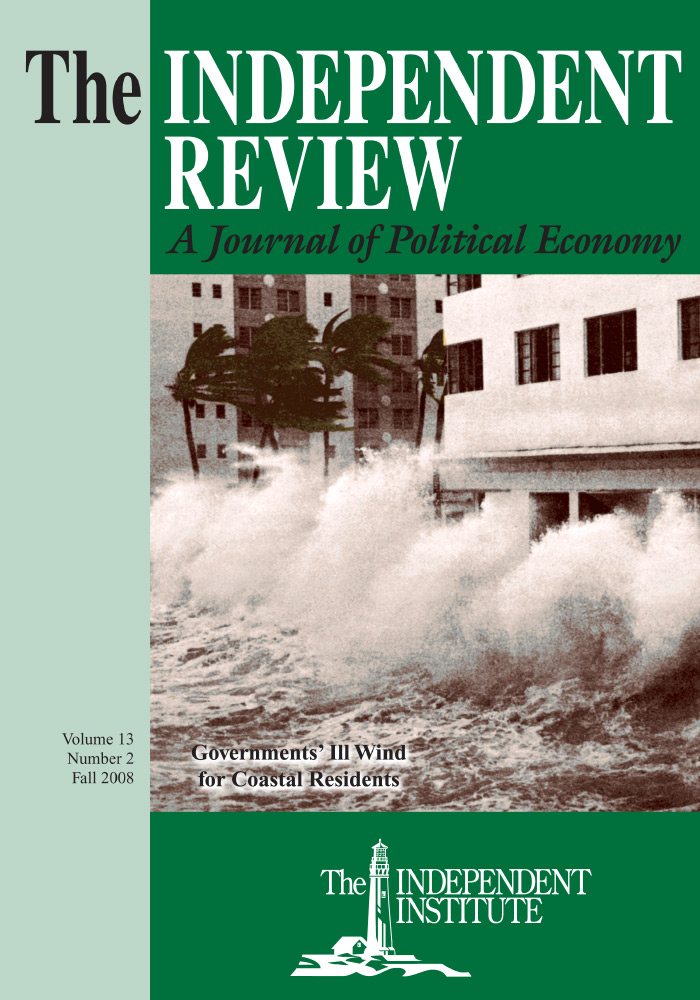In his 1987 work Crisis and Leviathan: Critical Episodes in the Growth of American Government, Robert Higgs provides a detailed explanation for the growth of government in the twentieth century. He develops a ratchet effect framework that appreciates the importance of ideology, constraints on government, and crisis. It provides a simultaneously straightforward but elegant explanation for expansions of the U.S. government.
Since its writing, questions of government growth are no less relevant. In the United States, the number of individuals employed by various aspects of government has grown dramatically. While federal government growth may appear to be moderate—from 1.9 million employees in January 1950 to 3 million in June 2024—employment in state and local government positively exploded (Federal Reserve Bank of St. Louis 2024a). In 1955, state governments employed just over 1.1 million people. By July 2024, state governments employed some 5.4 million (Federal Reserve Bank of St. Louis 2024b). Over the same period, employment in local governments grew from 3.5 million to nearly 15 million (Federal Reserve Bank of St. Louis 2024c). Government expenditure as a percentage of gross domestic product (GDP) has also ballooned. Between 1950 and 2023, government spending as a percentage of GDP rose from 13.4 percent to more than 36 percent in 2022 (Ortiz-Ospina and Roser 2023; Federal Reserve Bank of St. Louis 2024d). If one observes regulatory growth, the same story emerges. In 1950, the Federal Register contained some 9,500 pages. By the end of 2023, that number had increased by more than 851 percent—to 90,402 pages (Crews 2023).
Similar stories emerge outside the United States as well. As Ortiz-Ospina and Roser (2023) note, “the role and size of governments around the globe have changed drastically in the last couple of centuries.” They continue, “Although the increase in public spending has not been equal in all countries, it is still remarkable that growth has been a general phenomenon, despite large underlying institutional differences. At the end of the nineteenth century, European countries spent around 10 percent of GDP via the government. In the twenty-first century, this figure is closer to 50 percent” (Ortiz-Ospina and Roser 2023).
Higgs’s explanation for the growth of government in the United States is not the only one. Citizen-over-state (demand-side) theories, state-over-citizen (supply-side) theories, technological, and other explanations have been proposed to explain these changes over time (for an overview of these frameworks see Hall 2024, 108–12). But the framework offered by Higgs is unique in that it (1) allows for the operation and existence of other growth mechanisms and (2) allows us to understand expansions in both the scale, or size, of government and in the scope, or the portfolio of activities in which government engages. His work has been cited in many studies from multiple disciplines including fiscal sociology (Campbell 1993), healthcare and public health (McKee et al. 2013; Goodman et al. 2021), economic collapse (Reuveny and Prakash 1999), regulation (O’Reilly and Powell 2015), and issues related to defense and interventionism (Ikeda 1996; Kaempfer and Lowenberg 1999; Desch 2008; Coyne and Hall 2013, 2014, 2018; Krebs 2015; Beetsma et al. 2016). Despite his clear influence on many scholars, Higgs’s insights and the applicability of the ratchet effect model have yet to be fully appreciated, and there are a number of important ways in which the framework and its implications have been left under- or unexplored. The goal of this symposium is to investigate some of these heretofore neglected areas and demonstrate avenues for further inquiry. The articles contained within this issue, though centered on and anchored in the logic of the ratchet effect model, provide a range of analyses (from theoretical to applied) on different topics (from nuclear weapons to healthcare) from different countries (the United States to China).
The symposium’s first paper, “The Nuclear Ratchet: Crisis, Leviathan, and Atomic Weapons,” by Christopher J. Coyne and Abigail R. Hall, offers an extension of the ratchet effect model developed by Higgs in Crisis and Leviathan. They extend the model to account for multiple, or what they term “compounded,” crises. They note that, in many instances, crises are not singular and that multiple emergencies—real or perceived—contribute to the growth of government. They apply this extended model to the creation and expansion of nuclear weapons within the United States, highlighting how the compounded crises of Nazi Germany and, later, a nuclear Soviet Union led to increases in the scale and scope of government. Noting the criticality of ideology in Higgs’s original framework, they provide an explanation for the nonuse of nuclear weapons after 1945 and an explanation for the drawdown of nuclear arsenals beginning in the mid-1960s.
In “The China Ratchet: Extending Higgs’s Model to Explore Foreign Policy,” Ryan M. Yonk and Alec Stamm offer an extension of Higgs’s original model to a two-country model in foreign policy. Using U.S.–China foreign policy from the 1970s to the present, they show a two-country ratchet effect, where each nation’s interventionist expansions serve as crises for the other, leading to a cyclical escalation in government size and scope. The self-reinforcing nature of these cyclical crises provides less opportunity for any degree of un-ratcheting to occur, in contrast to the original formulation of Higgs’s model. Their results suggest that where two actors instigate and reinforce crises, ratchet effects are both more persistent and more intense.
In the symposium’s third paper, “Operation Warp Speed: An Emerging Ratchet?” Elisha K. Denkyirah and Raymond J. March analyze Operation Warp Speed (OWS), a partnership of six private vaccine developers and seven sub-agencies, with the intent to “accelerate the development of a Covid-19 vaccine.” They apply the ratchet effect framework to the perverse incentives impacting the public-private relationship. They show how, even after the end of the emergency surrounding Covid-19, the federal government continues to fund the production of Covid-19 vaccines, despite the relative ineffectiveness of the vaccine compared to other vaccines and a sharp drop in public usage. Although the vaccines were privately developed and the technology used to make them already existed, the immediate return to centralized efforts to disseminate the vital medical goods is evidence that partnerships established between agencies prevailed after Operation Warp Speed.
The final paper, by Mikayla Novak, “Endogenous Ratcheting Interests and Ideas in State-Centric Crisis Response,” examines Higgs’s ratchet effect through a Wagnerian systems-oriented approach. She illustrates how crises are produced and, in turn, how the increases in the scale and scope of government are legitimated. She provides a micro-foundational contribution toward our understanding of the ratchet effect, blending interest-oriented activity and ideational-moral argumentation. She highlights how creative actors work to entrench crises-created rents and other politically produced privileges. She suggests that further investigations into the affective, emotional, expressive, and symbolic properties of politics are likely to lead to greater support for the solidification of ratchet effects over time, as well as to a better understanding of how interests demanding a larger government coalesce in favor of ratcheted government interventions.
We hope readers will view these papers as a touchpoint for future research. The possible applications of the ratchet effect are numerous. Through further analyses of the ratchet effect in different countries, on different margins, and at different levels of government, we may come to a better understanding of how government grows and, critically, how over a century of growth trends may be slowed or reversed.
References
Beetsma, Roel, Alex Cukierman, and Massimo Giuliodori. 2016. Political Economy of Redistribution in the United States in the Aftermath of World War II—Evidence and Theory. American Economic Journal: Economic Policy, 8 (4): 1–40.
Campbell, John L. 1993. The State and Fiscal Sociology. Annual Review of Sociology 19:163–85.
Coyne, Christopher J., and Abigail R. Hall. 2013. The Militarization of U.S. Domestic Policing. The Independent Review 17, no. 4 (Spring): 485–504.
———. 2014. Perfecting Tyranny: Foreign Intervention as Experimentation in State Control. The Independent Review 19, no. 2 (Fall): 165–89.
———. 2018. Tyranny Comes Home: The Domestic Fate of U.S. Militarism. Stanford University Press.
Crews, Clyde Wayne, Jr. 2023. Biden’s 2023 Federal Register Page Count Is the Second-Highest Ever. Forbes, December 29.
Desch, Michael C. 2008. America’s Liberal Illiberalism: The Ideological Origins of Overreaction in U.S. Foreign Policy. International Security 32 (3): 7–43.
Federal Reserve Bank of St. Louis. 2024a. All Employees, Federal. July 5.
———. 2024b. All Employees, State Government. August 9.
———. 2024c. All Employees, Local Government. August 9.
———. 2024d. Federal Net Outlays as Percent of Gross Domestic Product. March 2024.
Goodman, Nathan P., Christopher J. Coyne, and Abigail Devereaux. 2021. Infectious Diseases and Government Growth. The Independent Review 25, no. 4 (Spring): 537–50.
Hall, Abigail R. 2024. Ideology, Crisis, and the Ratchet Effect: Retrospect and Prospects. In The Legacy of Robert Higgs, edited by Christopher J. Coyne. Mercatus Center, George Mason University.
Higgs, Robert. 1987. Crisis and Leviathan: Critical Episodes in the Growth of American Government. Oxford University Press.
Ikeda, Sanford. 1996. Dynamics of the Mixed Economy: Toward a Theory of Interventionism. Routledge.
Kaempfer, William H., and Anton D. Lowenberg. 1999. Unilateral versus Multilateral International Sanctions: A Public Choice Perspective. International Studies Quarterly, 43:37–58.
Krebs, Ronald R. 2015. Narrative and the Making of US National Security. Cambridge University Press.
McKee, Martin, Dina Balabanova, Sanjay Basu, Walter Ricciardi, and David Stuckler. 2013. Universal Health Coverage: A Quest for All Countries but Under Threat in Some. Value in Health 16:539–45.
O’Reilly, Colin, and Benjamin Powell. 2015. War and the Growth of Government. European Journal of Political Economy 40:31–41.
Ortiz-Ospina, Esteban, and Max Roser. 2023. Government Spending. Our World in Data, October 16.
Reuveny, Rafael, and Aseem Prakash. 1999. The Afghanistan War and the Breakdown of the Soviet Union. Review of International Studies 25:693–708.
| Other Independent Review articles by Abigail R. Hall | ||
| Spring 2025 | The Nuclear Ratchet: Crisis, Leviathan, and Atomic Weapons | |
| Spring 2023 | How to Run Wars: A Confidential Playbook for the National Security Elite | |
| Fall 2021 | Militarized Extremism: The Radical Right and the War on Terror | |
| [View All (11)] | ||
| Other Independent Review articles by Ryan M. Yonk | ||
| Spring 2025 | The China Ratchet: Extending Higgs’s Model to Explore Foreign Policy | |
| Spring 2024 | Conservation, Ecology, and Growth in For a New Liberty | |
| Summer 2017 | From Equality and the Rule of Law to the Collapse of Egalitarianism | |
| [View All (4)] | ||

